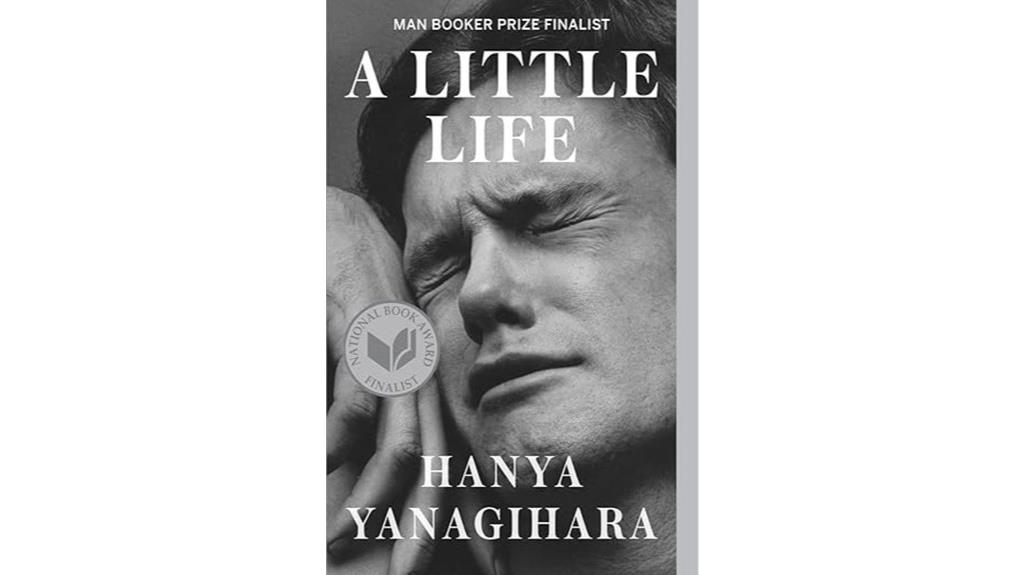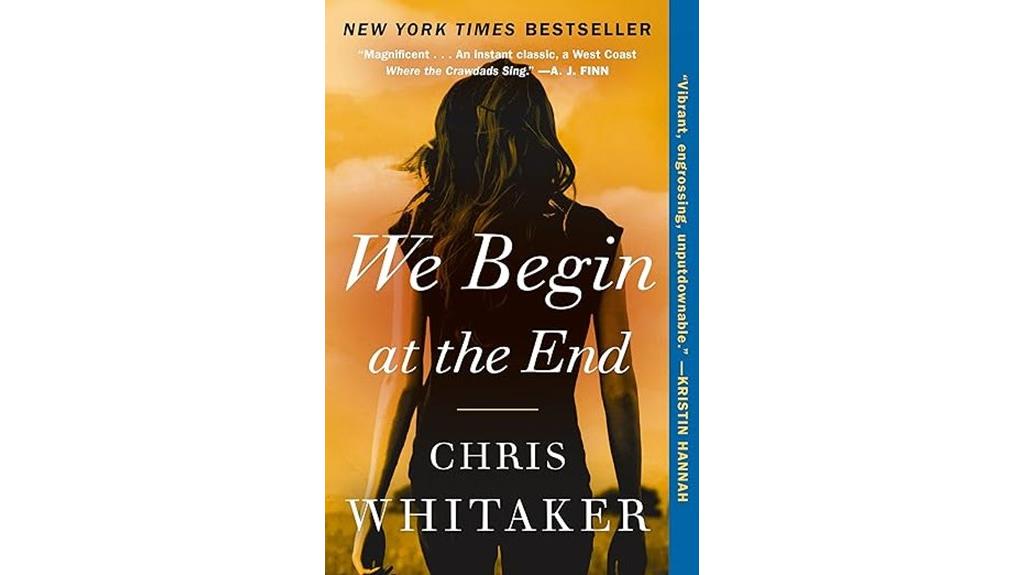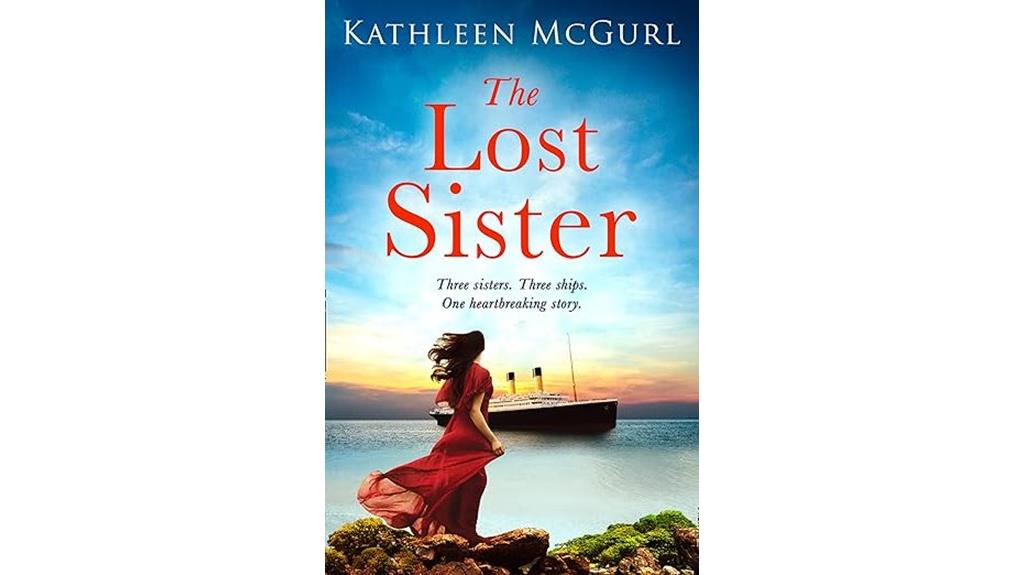Table of Contents Show
There may be products. Products are independently selected by our editors. We may earn an affiliate commission from the links with no charge to you, example: as Amazon Affiliate.
We’ve discovered three literary masterpieces that’ll leave an indelible mark through their unforgettable characters. “A Little Life” draws us deep into four friends’ emotional journey in NYC, while “We Begin at the End” captivates with its complex exploration of love and redemption. “The Lost Sister” connects two timelines through the Titanic disaster, weaving a powerful tale of family bonds. Let’s explore how these remarkable stories transform our understanding of human resilience.
Key Takeaways
- “A Little Life” stands out for its masterful portrayal of four male friends, particularly exploring trauma and friendship through unforgettable character development.
- “We Begin at the End” delivers complex, unpredictable characters whose journeys of love and redemption leave lasting impressions on readers.
- “The Lost Sister” creates memorable characters through dual timelines, connecting sisters’ lives through the dramatic backdrop of the Titanic disaster.
- All three books excel in emotional authenticity, featuring layered characters who maintain believability while facing extraordinary circumstances.
- Critics praise these books for their exceptional character development, complex relationships, and ability to create deep emotional connections with readers.
A Little Life

For readers who appreciate emotionally profound and challenging narratives, A Little Life stands as a monumental work of contemporary literary fiction. In this gut-wrenching novel, we follow four male friends in New York City—JB, Willem, Malcolm, and Jude—through decades of their intertwined lives. While we witness their professional and personal journeys, it’s Jude’s haunting story that grips us most deeply.
Hanya Yanagihara’s unflinching exploration of trauma, friendship, and resilience has earned widespread acclaim, though we’ll warn you: it’s not an easy read. Through masterful character development and shifting perspectives, we’re invited into a world that’s both beautiful and devastating.
Best For: Readers seeking a profound, emotionally intense literary experience who can handle heavy themes of trauma, abuse, and the complexities of human relationships.
Pros:
- Masterful character development and deeply affecting portrayal of friendship and love
- Rich, complex narrative structure with skillfully woven flashbacks and perspective shifts
- Beautiful prose that captures both devastating pain and moments of genuine joy
Cons:
- Extremely graphic depictions of trauma and abuse that may be triggering for sensitive readers
- Length and emotional intensity can be overwhelming and exhausting
- Some readers may find the level of suffering depicted excessive or gratuitous
We Begin at the End

Readers seeking profound character development and emotional resonance will find themselves captivated by Chris Whitaker’s “We Begin at the End.” This literary masterpiece weaves together complex characters who elicit both empathy and anger while exploring themes of love, redemption, and human nature.
While Whitaker’s vivid writing style occasionally challenges readers, the unpredictable plot twists and emotional depth make this story unputdownable. Through the innocence of children and the power of selfless acts, we’re reminded that goodness exists even in difficult circumstances. It’s a moving reflection of the human spirit that’ll leave you keen to explore more of Whitaker’s work.
Best For: Readers who appreciate character-driven literary fiction with emotional depth and complex storytelling, particularly those who enjoy exploring themes of redemption and human nature through unpredictable narratives.
Pros:
- Exceptional character development with complex, believable personalities that create strong emotional connections
- Unpredictable plot twists that maintain reader engagement throughout the story
- Powerful exploration of profound themes including love, redemption, and the existence of goodness in difficult circumstances
Cons:
- Writing style can be challenging for some readers, occasionally disrupting flow
- May be emotionally heavy for readers seeking lighter entertainment
- Complex narrative structure might require careful attention to follow all plot elements
The Lost Sister: A Historical Timeslip Novel

Literary fans seeking an emotionally rich journey through time will find their perfect match in “The Lost Sister,” a masterfully crafted historical timeslip novel.
We’re drawn into dual timelines that interweave the fates of three sisters across generations, anchored by Emma Higgins’ survival of the Titanic disaster where she worked as a stewardess. Through Harriet’s present-day discovery of her grandmother’s sea trunk, we uncover a gripping tale of family bonds, independence, and parental love.
The author’s flowing prose creates an unforgettable narrative that brings working-class life in the early 1900s vividly to life, making us feel deeply connected to these sisters’ remarkable journey through history.
Best For: Readers who enjoy emotionally immersive historical fiction with family-centered narratives, particularly those interested in early 20th-century history and multi-generational storytelling.
Pros:
- Masterful dual-timeline structure that effectively weaves past and present storylines
- Rich historical detail, including compelling Titanic survival narrative
- Strong character development with deep exploration of sisterly bonds and family relationships
Cons:
- May be too emotionally intense for readers seeking lighter historical fiction
- Slower pacing due to focus on character development and historical detail
- Timeline switches might be challenging for readers who prefer linear narratives
Factors to Consider When Choosing Literary Fiction Books Filled With Unforgettable Characters
When we’re searching for literary fiction with memorable characters, we need to examine how authors build their protagonists through careful character development, distinctive writing styles, and emotionally resonant storylines. We should look for books that masterfully weave historical contexts into their narratives while exploring complex relationships between characters. The most unforgettable literary works challenge us with multifaceted themes that reveal the depth of human nature through their characters’ choices, conflicts, and transformations.
Character Development and Depth
Strong character development lies at the heart of unforgettable literary fiction, shaping stories that resonate long after the final page. We look for characters who evolve through meaningful experiences, facing internal conflicts that mirror our own struggles with love, loss, and redemption.
When evaluating character depth, we focus on emotional authenticity in both dialogue and relationships. Characters should feel real and layered, like those in “A Little Life” and “We Begin at the End,” where complex backstories illuminate their present actions and choices. The most compelling narratives show characters transforming through their experiences while maintaining believability. We’re drawn to stories that explore generational dynamics and universal themes, allowing us to connect deeply with characters as they navigate life’s challenges and emerge changed by their journeys.
Writing Style and Tone
Mastery of writing style and tone profoundly shapes our connection to literary fiction’s unforgettable characters. We’re drawn to authors who balance vivid, descriptive language with emotional resonance, as seen in Yanagihara’s “A Little Life” and Whitaker’s “We Begin at the End.” These writers craft their narratives through carefully structured timelines, whether through interwoven flashbacks or dual storylines, deepening our understanding of each character’s journey.
We look for prose that strikes the right balance between lyrical beauty and readability. While complex sentences can challenge us, they often reveal deeper layers of meaning. The most memorable books combine raw emotional intensity with measured storytelling, creating an immersive experience that keeps us invested in the characters’ lives without overwhelming us.
Plot’s Emotional Resonance
When choosing literary fiction, we look for narratives that build deep empathy through characters’ journeys. Dual timelines can amplify this connection, letting us experience themes of love and loss across generations. The most memorable stories combine unpredictable plot twists with descriptive language that captures raw emotional experiences. We’re particularly moved by books that don’t shy away from difficult themes but instead use them to forge stronger bonds between reader and character, creating an indelible impression that continues to resonate.
Historical Context Matters
Historical context serves as more than just a backdrop in literary fiction – it shapes the very essence of unforgettable characters and their journeys. When we immerse ourselves in stories set against significant historical events, like the sinking of the Titanic, we discover how these moments transform ordinary lives into extraordinary tales.
We’re drawn to characters whose choices reflect the social and political realities of their time. Their struggles become more meaningful when we recognize the historical forces that constrain or empower them. A meticulously researched setting doesn’t just add authenticity; it helps us connect personally with characters across generations. We see ourselves in their experiences of love, loss, and family bonds, even when separated by decades or centuries. This deep connection makes historical context essential for creating truly memorable characters.
Complex Relationships and Themes
Building on the foundation of historical settings, the layered relationships and complex themes in literary fiction create profound emotional connections with readers. We’re drawn to stories that explore the intricate bonds between characters, whether through family dynamics in “The Lost Sister” or the deep friendships portrayed in “A Little Life.” These works challenge us to examine trauma, resilience, and the enduring power of love.
When we encounter well-crafted characters facing moral dilemmas and emotional struggles, we’re compelled to reflect on our own humanity. Books like “We Begin at the End” demonstrate how complex relationships drive character development, making us question our assumptions about good and evil. The best literary fiction doesn’t just tell a story – it invites us to explore the depths of human connection and moral complexity.
Conclusion
We’ve explored three distinct masterpieces where characters leap from the pages into our hearts and minds. While Jude’s haunting pain in A Little Life contrasts with Duchess’s fierce resilience in We Begin at the End, both remind us why we read: to experience lives unlike our own. Whether you prefer historical drama or contemporary fiction, these unforgettable characters will stay with you long after the final page.









